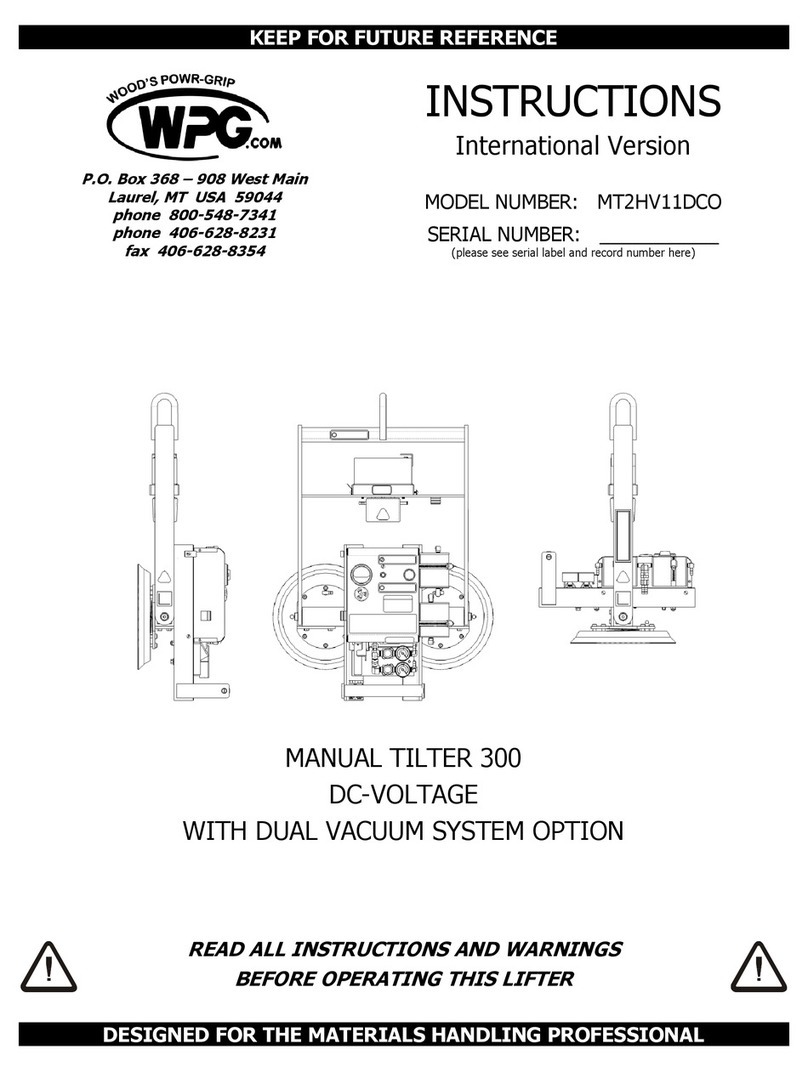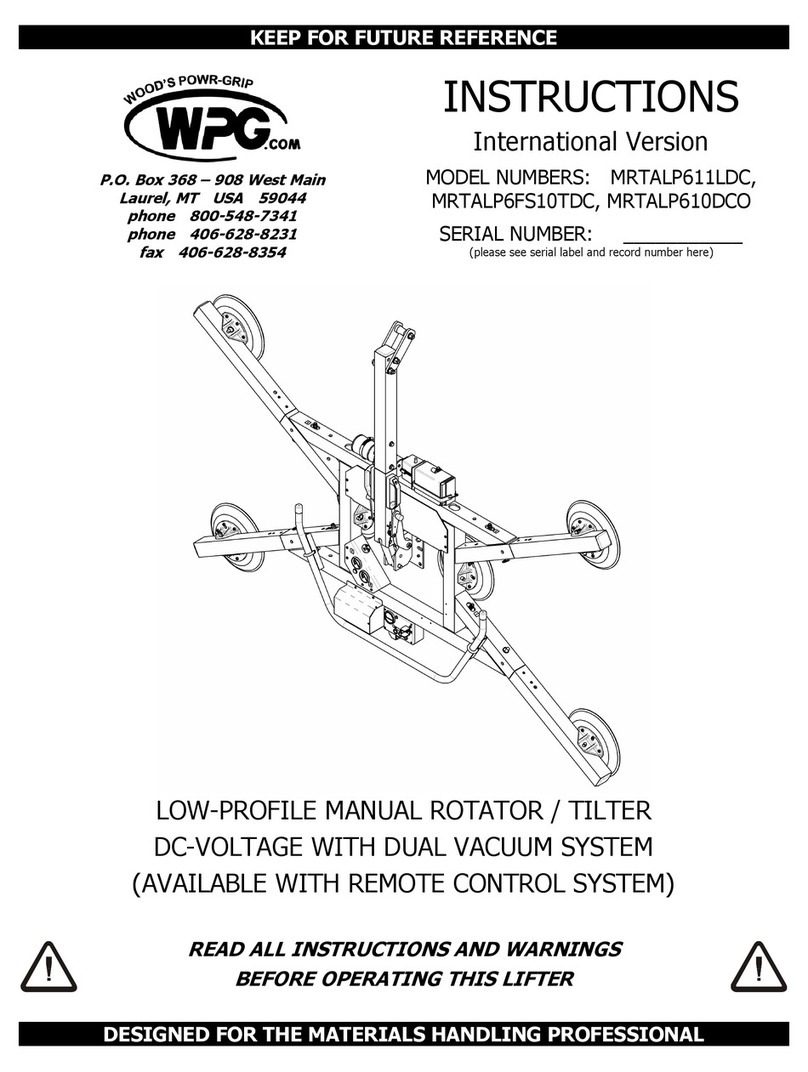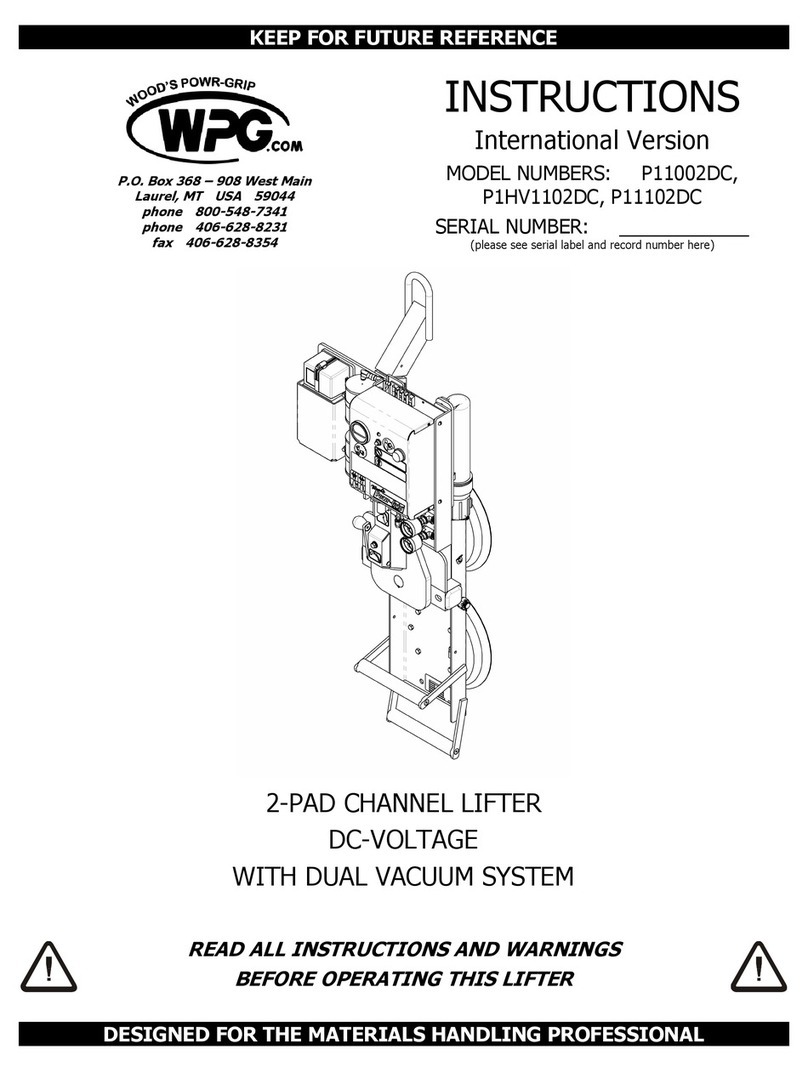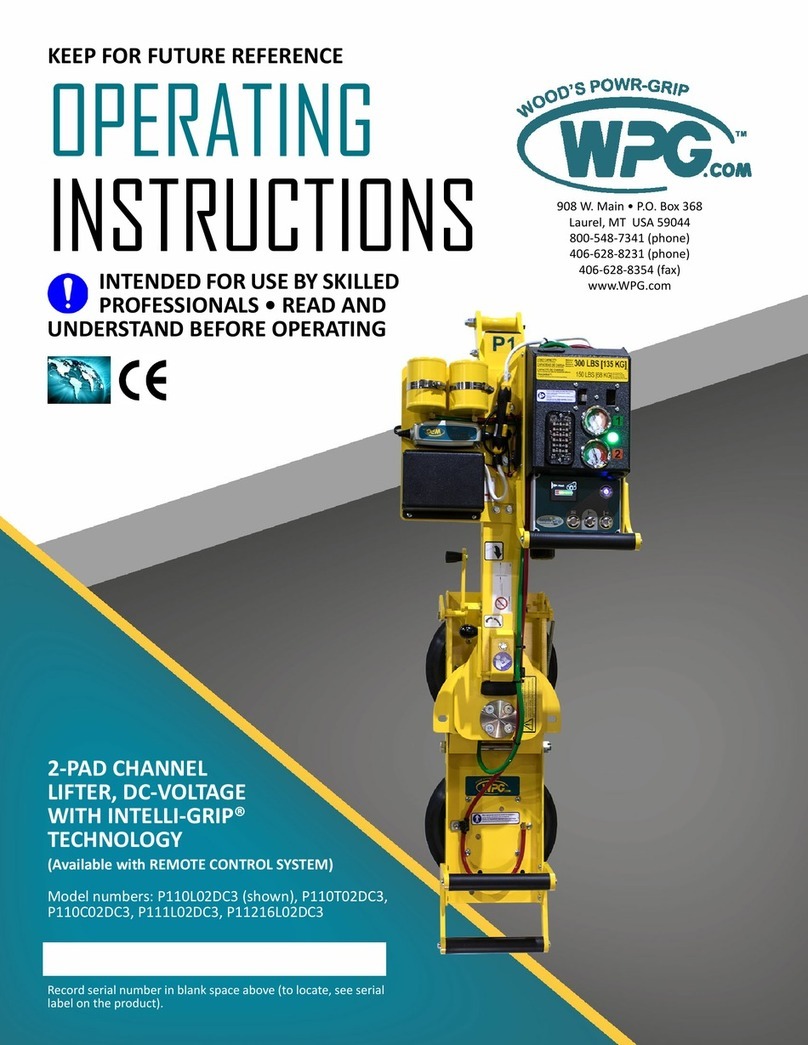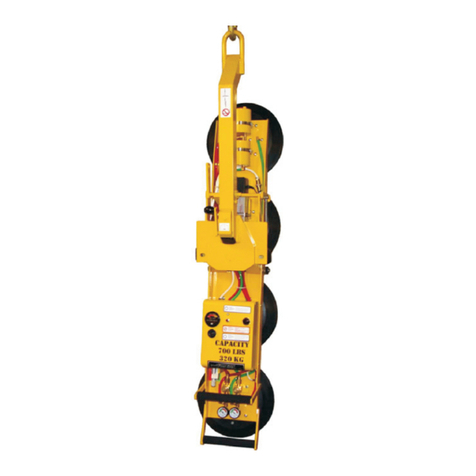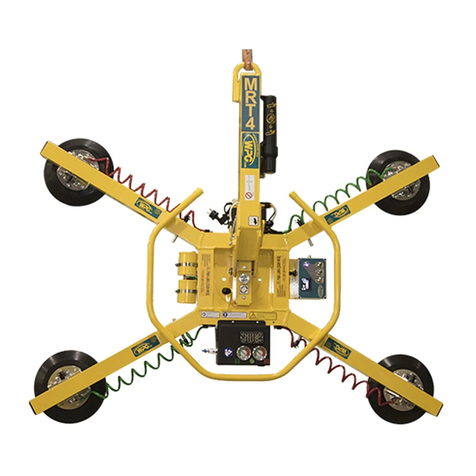
Rev 3.0/7-15 1 FLEXR(L)-HV11AIR: #35036
TABLE OF CONTENTS
SPECIFICATIONS............................................................................................................ 3
WARNINGS ..................................................................................................................... 4
OPERATING FEATURES................................................................................................... 5
ASSEMBLY....................................................................................................................... 6
INTENDED USE ............................................................................................................... 7
LOAD CHARACTERISTICS ................................................................................................... 7
OPERATING ENVIRONMENT ................................................................................................ 8
DISPOSAL OF THE LIFTER................................................................................................... 8
OPERATION .................................................................................................................... 9
BEFORE USING THE LIFTER ................................................................................................ 9
Taking Safety Precautions ............................................................................................................................9
Performing Inspections and Tests .................................................................................................................9
TO CHANGE THE CONFIGURATION OF VACUUM PADS ............................................................ 10
TO APPLY THE PADS TO A LOAD ........................................................................................ 10
Powering up the Lifter................................................................................................................................10
Positioning the Lifter on the Load ...............................................................................................................11
Sealing the Pads against the Load...............................................................................................................11
Reading the Vacuum Gauge .......................................................................................................................11
Vacuum Level on Optimal Surfaces .............................................................................................................12
Vacuum Level on Other Surfaces ................................................................................................................12
TO LIFT AND MOVE THE LOAD........................................................................................... 12
Load Capacity and the Vacuum Gauge ........................................................................................................12
Monitoring the Vacuum Gauge....................................................................................................................13
Controlling the Lifter and Load....................................................................................................................13
In Case of Power Failure ............................................................................................................................13
TO RELEASE THE PADS FROM THE LOAD .............................................................................. 14
About Stand-By Mode ................................................................................................................................14
AFTER USING THE LIFTER ................................................................................................ 14
Storing the Lifter........................................................................................................................................14
MAINTENANCE.............................................................................................................. 15
INSPECTION SCHEDULE ................................................................................................... 15
Every-Lift Inspection ..................................................................................................................................15
Frequent Inspection ...................................................................................................................................15
Periodic Inspection ....................................................................................................................................15
Infrequent Use ..........................................................................................................................................16
TESTING SCHEDULE ........................................................................................................ 16
Operational Tests.......................................................................................................................................16
Load Test ..................................................................................................................................................16
MAINTENANCE SCHEDULE ................................................................................................ 17

